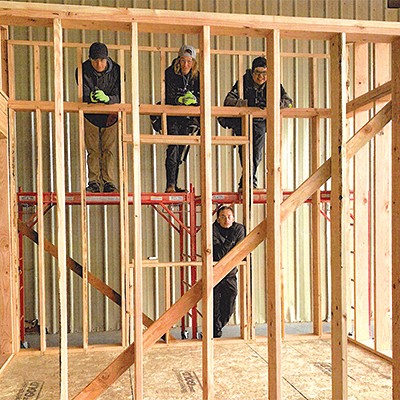A core doctrine of classical economics is that competition is a good thing. According to orthodox theory, it produces better products and services, greater efficiency and lower prices.
But things don’t always work out that way, at least in the health care field. Case in point: the crazy air ambulance situation Central Oregonians are stuck with.
Up until this year there was only one air ambulance service based in the region: AirLink, operated by St. Charles Health System, the parent company of St. Charles Medical Center. AirLink had reciprocal arrangements with other air ambulance services around the state so that its subscribers were covered if they had to use those services.Then in February, Life Flight Network, based in Aurora, started operating in northern Deschutes County, southern Jefferson County and a sliver of Crook County. But Life Flight had a reciprocal arrangement with AirLink, so for a while everything was okay.
Enter, in April, Metro Aviation, a for-profit company out of Louisiana. St. Charles sold AirLink to Metro because it was losing money on the service – and Metro wouldn’t continue to honor AirLink’s agreement with Life Flight. So now we have the ludicrous spectacle of two competing air ambulance services operating within the same relatively small geographic area, neither accepting the other’s members as being covered for its services.
What does that mean for consumers? Just this: If you happen to have, say, an Air Link membership but not a Life Flight membership and you get seriously ill or injured in northern Deschutes County and have to be helicoptered to a hospital, you can get dinged as much as $30,000 for the ride.
Fire officials have produced a matrix to determine whether to call AirLink or Life Flight, depending on location. But in an emergency situation dispatchers will call in the next-closest company if the helicopters of the closest one are tied up.
The solution that some officials are recommending is to buy memberships in both services. But they cost $60 per year apiece, and the extra $60 could be a hardship for some Central Oregonians, such as elderly people living on reduced incomes – precisely the folks most likely to need a helicopter ambulance, especially if they live in remote areas.
The weird ambulance situation is a small-scale example of how competition between for-profit companies produces higher costs and inefficiency instead of the reverse when it comes to delivering health care. Companies – hospitals, medical groups, labs, ambulance services – end up fighting over pieces of the same pie, leading to duplication of services and higher costs all around.
Maybe someday the United States will scrap the present hopelessly broken for-profit model of health care in favor of a single-payer system like Canada’s. And maybe someday air ambulances will be a public service like police and fire protection. We’re not holding our breath waiting for either of those things to happen, though.
But in the meantime, we can urge AirLink and Life Flight to get together and work out a reciprocal agreement – and give them THE BOOT for not having done it already.


























